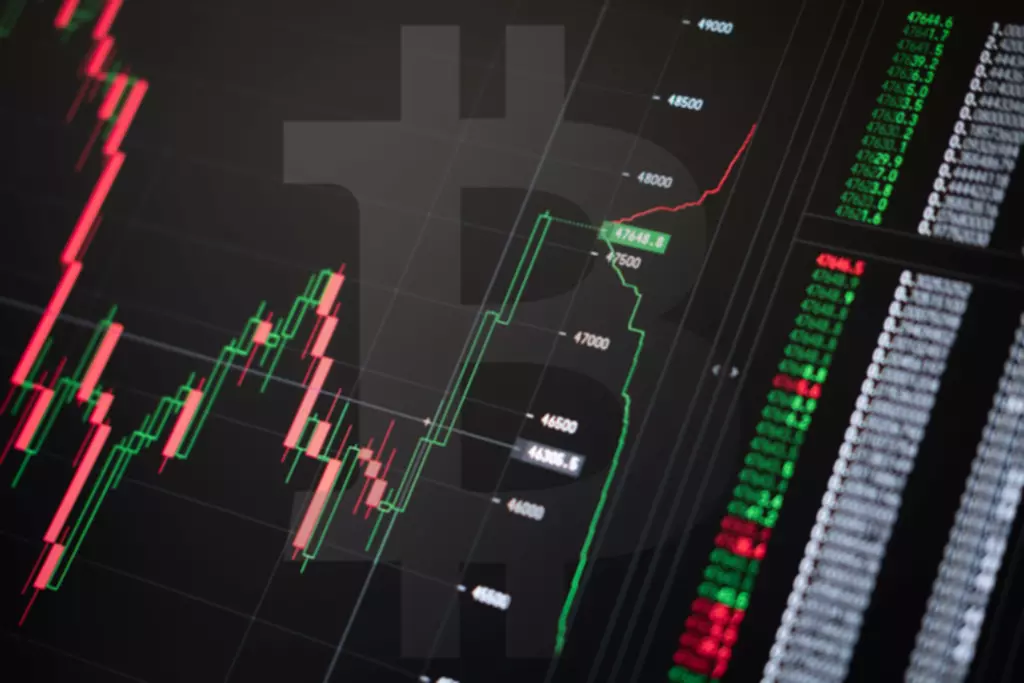Содержание
There comes the breaking point, and trading activity after the breakout differs. Once prices move out of the specific boundary lines of a falling wedge, they are more likely to move sideways and saucer-out before they resume the basic trend. A breakout is when the price moves above a resistance level or moves below a support level.
Get to know us, check out our reviews and trade with Australia’s most loved broker. Needs to review the security of your connection before proceeding. How to be great trade – Frank’s reading between the lines method. I will show you the textbook definition of how to trade it but I will also demonstrate the real-world application of how we can trade this pattern. A crypto debit card is a type of debit card that allows its holder to pay for goods and services using cryp… This website is using a security service to protect itself from online attacks.

But in this case, it’s important to note that the downward moves are getting shorter and shorter. This is a sign that bullish opinion is either forming or reforming. Falling wedge patterns are wide at the top and contract to form the point as price moves lower. Below are some common conditions that occur in the market that generate a falling wedge pattern. An ascending triangle has a flat top with rising bottoms or a rising trendline.
Active Trading Blog
Trend lines are the best way to spot the narrowing of the channel, which is the first key sign that the reversal may be forming. Wedge patterns have converging trend lines that come to an apex with a distinguishable upside or downside slant. When trading a wedge, stop loss orders should be placed right above a rising wedge, or below a falling wedge. You do not want to make your stops too tightly as the price action will often violate one of the trend lines before rebounding swiftly. Instead, you’ll want to see a real break of significance to know you need to exit your position. As you’ve seen on the charts, trend lines are used not only to form the patterns but become support and resistance.

In the discord, we offer in-depth analysis for our stock picks that week, 1 on 1 session to help identify strengths and weaknesses, and a supportive trading community. The pattern is formed by two downward sloping, converging trendlines. Rising and falling wedges depict aggression and caution in buying and selling activity, informing analysts of market dynamics. It can be dangerous to confuse these patterns with wedges since they each have separate utilities, preferred time frames, technical characteristics, and signaling formats. In both cases, we enter the market after the wedges break through their respective trend lines. There are two wedges on the chart – a red ascending wedge and a blue descending wedge.
Candlestick Patterns Professional Traders Use
When a market centralizes between two intersecting support and resistance lines, a falling wedge pattern forms. When the support and resistance lines point downwards, this is also an indication of a falling wedge. The slope of the resistance line must be greater than that of the support line. Note that pennants differ from symmetrical triangles because they do not possess the flagpole at the start of the pattern. Unlike triangles, however, Pennants are primarily used to forecast short-term price movements.
They can be traded on both short and long term time frames and offer defined entry and exit points. Out of all the chart patterns that we like to see in a bull market, the falling wedge is definitely one of the top patterns for new traders. It’s an extremely bullish pattern for all instruments in any market in any trend. There is a wide range of trading patterns that you can trade.
There are two things I want to point out about this particular pattern. It’s important to keep in mind that although the swing lows and swing highs make for ideal places to look for support and resistance, every pattern will be different. Some key levels may line up perfectly with these lows and highs while others may deviate somewhat. Notice how we simply use the lows of each swing to identify potential areas of support.
How To Trade The Falling Wedge Pattern
We’re looking at the wedge that formed from May 29th, 2019 to June 4th, 2019. We’ve already established that the entry is on the breakout of the wedge. We call them flags and pennants because of what they look like. The prior uptrend is like a pole, and the falling wedge is the pennant ‘waving’ on the pole. Don’t quote me on this, but I believe that those results are based solely on the performance in the stock market.
If it is green, then bullish momentum may have taken hold; if it is red then it may be best to wait. Set a profit target or choose how you will exit a profitable position. An estimated profit target may be the height of the wedge at its thickest part, added to the breakout/entry point.
The bearish bias in this pattern can’t be signaled until a breakdown of the ascending support to show this is a reversal pattern from highs in price. Falling wedges are generally taken to be more reliable than rising wedges with regard to their price breakout signals. Stop loss orders should be placed above the rising wedge and below the falling wedges. For example, if you have a rising wedge, the signal line is the lower level, which connects the bottoms of the wedge.
This negative sentiment builds up, so that when the market moves beyond its rising support line, anyone with a long position might rush to close their trade and limit their what does a falling wedge indicate losses. This causes a tide of selling that leads to significant downward momentum. It’s important to have confirmation of the breakout so you’re not caught in a trap.
As a bullish descending wedge pattern, you should notice that volume is increasing as the stock puts in new lows. As this “effort” to push the stock downward increases along the lows, you’ll notice that the result of the price action is diminishing. “It pays to wait for that breakout and to act immediately on it.
Chart Pattern: Falling Wedge
Due to a news announcement against the Euro, the exchange rate starts falling as the market trends in a downtrend. The currency’s exchange rate falls from 2 to 1.5 to 1.3 in the next few days. For those of you who found this useful, I hope you guys and gals will keep checking back in with us. Our goal is to help everyone become better traders, and if you are just starting out and need a more personalized approach, discord can be a great option.
This leads to you benefitting from the profits reaped by exiting the trade and entering the short position. Another important feature to recognize here is the fact that a rising wedge can occur in either a bullish or a bearish trend. That’s why we cannot specifically say it is a continuation pattern or a reversal pattern. So, if it occurs in a bullish trend, it tends to break bearish and functions as a reversal pattern. But if it occurs in a bearish trend, it will also tend to break bearish, which would appear as a continuation pattern.
Celer Network Price Analysis : Will CELR Coin Break Out From the Falling Wedge or Continue Falling? – The Coin Republic
Celer Network Price Analysis : Will CELR Coin Break Out From the Falling Wedge or Continue Falling?.
Posted: Fri, 16 Sep 2022 07:00:00 GMT [source]
Like head and shoulders, triangles and flags, wedges often lead to breakouts. In the case of rising wedges, this breakout is usually bearish. To be seen as a reversal pattern it has to be a part of a trend to reverse. In a perfect world, the falling wedge would form after an extended downturn to mark the final low. The range of results in these three studies exemplify the challenge of determining a definitive success rate for day traders. At a minimum, these studies indicate at least 50% of aspiring day traders will not be profitable.
Trade Management
However, rising wedges can occasionally form in the middle of a strong bearish trend, in which case they are running counter to the main price movement. In this case, the bearish movement at the end of the rising wedge is a continuation of the main downward trend. The falling wedge pattern is considered as both a continuation or reversal pattern. It can be found at the end of a trend but also after a price correction during an ongoing bullish trend. Thebullish flag patternforms after a bullish trend, and moves lower by maintaining an equal distance between swing levels.
- Rising wedges don’t just look like the opposite of falling ones.
- He predicted that the uptrend might be coming to an end, resulting in a downward breakout.
- You should not treat any opinion expressed in this material as a specific inducement to make any investment or follow any strategy, but only as an expression of opinion.
- Past performance of a security or strategy is no guarantee of future results or investing success.
In both cases, falling wedge patterns are generally resolved to the upside. Conversely, during a downtrend, we have the exact same scenario – price is likely to increase after a falling wedge pattern and price is likely to decrease after a rising wedge pattern. However, since the equity is moving downwards, our rising wedge pattern implies trend continuation and the falling wedge pattern – trend reversal.
In this pattern, a new lower low and lower high are formed as the price remains within converging trend line support and resistance. The falling wedge pattern is a technical formation that signals the end of the consolidation phase that facilitated a pull back lower. As outlined earlier, falling wedges can be both a reversal and continuation pattern. In essence, both continuation and reversal scenarios are inherently bullish. Stop-loss orders in a rising or falling wedge pattern can be placed either some price points above the last support level or below the resistance level. The trade is closed at these points to ensure that losses are minimised, and profits are maximised if the support level fails to turn into a resistance level and vice versa.
They can also be part of a continuation pattern but not matter what it’s always considered bullish. Knowing what Japanese candlesticks patterns are telling you is imperative whentrading stocks. For new traders/investors, one of the more difficult things to do is taking profit. Not just taking profit but identifying what your profit target should be. Because of a behavioral defense mechanism known as loss aversion, humans do the opposite of what we should do in trading. Wedges are a variation of a triangle in that it’s shape ultimately creates an apex , but wedges trade very differently than standard triangle patterns.
A wedge pattern generally forms and moves in the opposite direction of the longer term trend on a chart and shows a short term reversal that usually fails and the previous trend resumes. The falling wedge pattern is a bullish pattern that begins wide at https://xcritical.com/ the top and continues to contract as prices fall. As with the rising wedges, trading falling wedge is one of the more challenging chart patterns to trade. A falling wedge pattern signals a continuation or a reversal depending on the prevailing trend.
How To Trade Ascending And Descending Wedge Patterns?
If you have a falling wedge, the signal line is the upper level, which connects the formation’s tops. The rising wedge pattern develops when price records higher tops and even higher bottoms. Therefore, the wedge is like an ascending corridor where the walls are narrowing until the lines finally connect at an apex. To wrap up this lesson, let’s take a look at a rising wedge that formed on EURUSD.
The white arrows below point out what happened once the price hit the resistance trendline. And then we saw price retrace back down towards the trendline support. So if you wanted to trade this, you would open a bearish position at the trendline resistance and then close it at the trendline support. Depending on what the previous trend was, this chart could either be considered a continuation pattern or a reversal pattern.
However, it’s often difficult for investors to hold this position for a long time. They usually book a profit after getting some benefit, often adding more positions when the price is discounted. As a result, the bearish wedge pattern that we see after a bullish trend is partially the result of buyers’ profit-taking. Once the profit-taking is over and the price finds a dip, investors will begin to buy again.
The falling wedge pattern can fit in the continuation or reversal category. When it is a continuation pattern it will trend down, however the slope in the wedge will be against the overall market uptrend. When it is a reversal pattern, the falling wedge trends down when the overall market is in a downtrend but breaks to the upside.



